How many days in Split is enough? The length you need will depend on several factors. Read on to discover whether you should spend just one day there or build a whole week into your Croatia itinerary.
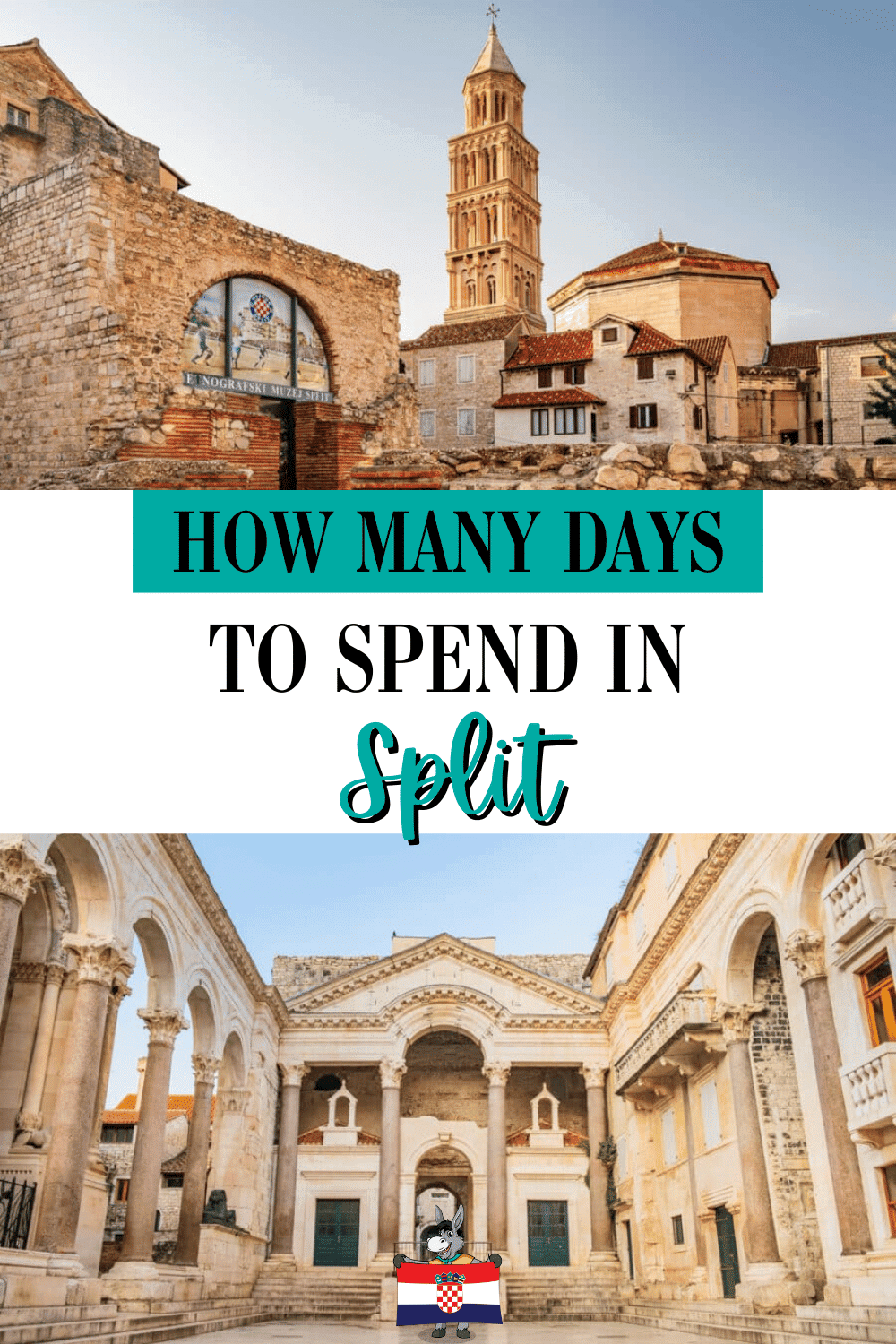
Croatia has a whole host of amazing destinations to discover, from the history of Dubrovnik to the lush landscapes of Plitvice National Park and a string of sun-dappled islands. But of all the bucket list places to visit in Croatia, Split should not be overlooked.
Home to charming cobbled streets, fascinating historic sights, and a dreamy coastline, Split is well worth your time. But working out how many days to spend in the port city can be confusing. You can explore Split over a long weekend, but staying longer means more time to take day trips to other notable locations along the coast.
So, we’ve put together this useful guide to help you determine how long you should spend in Split.
Skip Ahead To My Advice Here!
How Many Days Is Enough To See Split?
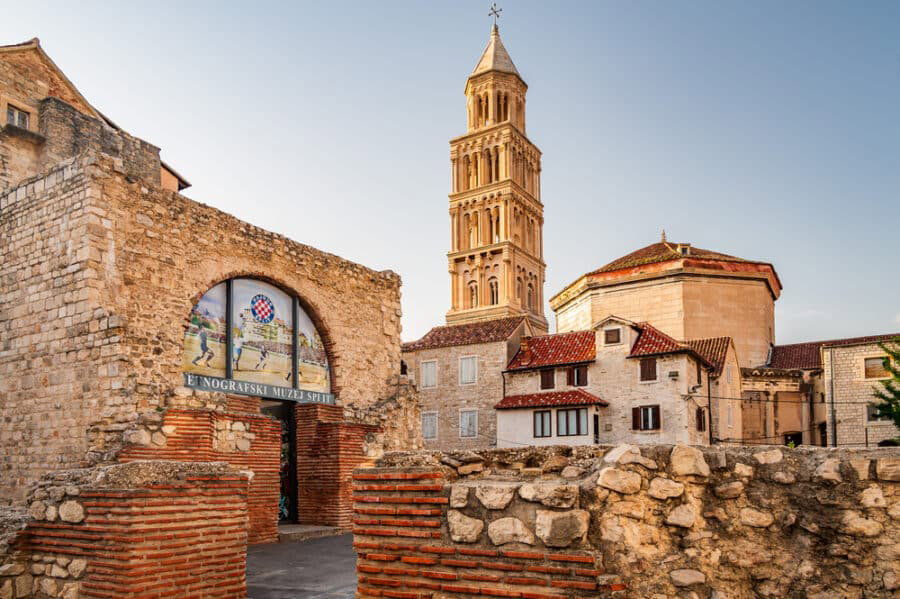
If you’re wondering how many days you should spend in Split, you need to take into account the kind of trip you want to take. If you only have one or two days in Split, you will have enough time to see most of the main sights scattered around the Old Town.
If time is limited, booking a full-day tour of the city is a good idea. This will allow you to pack more places for your trip.
A weekend in Split is enough time to see the city’s best attractions, but you might not have time to visit nearby islands like Hvar.
I would recommend spending at least 2-3 days in Split getting to know the city, learning about the history, wandering the streets, ticking off the sights, and enjoying a little local life, too.
Since 2 days is the minimum time in Split, I recommend, let’s start there…
How To Spend 2 Days In Split
With a two-day itinerary in Split, you have the ideal amount of time to see many of the City’s best sights. You could spend the first-day exploring places such as Diocletian’s Palace and the Cathedral of Saint Dominus, and on day two, you will have time to visit the best museums and galleries in Split.
There’s even the option of spending part of your 48 hours in Split sunning yourself at the beach.
How To Spend 3 Days In Split
Three days in Split is the perfect amount of time to really get a good feel for the city. You’ll have enough time to see most of the top things to do in Split and may even have enough time on day 3 to slow things down and enjoy a more local experience.
You might even want to do something fun like a food tour of the city.
How To Spend 4-5 Days In Split
The good news is that you can easily spend at least four days in Split, taking in the city sights. In fact, four to five days is enough time to explore more beyond Split. There’s no shortage of places to see if you want to take a day trip from Split.
The lush landscape of Krka National Park is less than an hour’s drive away, Plitvice Lakes National Park is just a few hours away, and other cities along the coast, such as Dubrovnik, are also worth visiting.
A Day Trip To Split
If you only have one day in your Croatia trip itinerary to explore Split, don’t worry. A day trip is enough time to visit Split, spend the day exploring the main sights, and get a taste of what the city is about. You can always come back to Split on another trip if you really like it!
Split Itinerary Ideas
One Day In Split

Spend the first day in Split wandering through the city’s rich history. Begin your day in Split Old Town. This part of the city is where a long list of the most popular tourist attractions is found.
Start your adventures at Diocletian’s Palace. Built by Roman emperor Diocletian in the fourth century, the palace spans much of Split’s historic core. Today, the UNESCO World Heritage site is the city’s top attraction and is the ideal place to journey into Split’s past.
Afterward, take a break in the main square. This lively spot is great for people-watching and grabbing a quick refreshment.
And then it’s on to the Cathedral of Saint Dominus. Also, dating back to the 4th century, make sure to snap some pictures of the impressive architecture before making the journey to the top of its 57-meter bell tower.
To reach the top, you’ll have to climb a narrow staircase, but your efforts will be rewarded with some of the best views of Split.
Following your morning of culture and history in the old town of Split, it’s time to take a breather by strolling along the coastal promenade. Split Riva is a long seaside walkway that is usually busy with people walking, chatting, and relaxing in the sun.
Enjoy a leisurely stroll as you take in the scenery. You might want to stop off for a bite to eat at one of the eateries along the way – the ideal place for a delicious lunch.
In the afternoon, why not take the opportunity to shop at one of Split’s markets? Pazar Market is a vibrant place to shop for souvenirs. It runs along Hrvojeva Street, just over the east wall of Diocletian’s Palace.
Day Two – Split In 2 Days
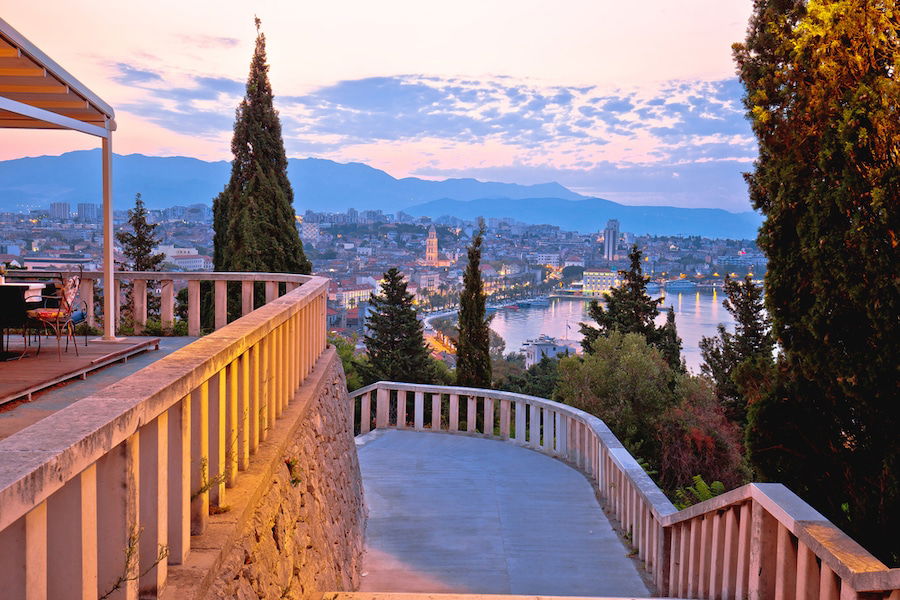
It’s your second day in Split, and by now, you should have a good idea of what the city is about. Start the day by picking up your morning coffee in Split from one of the little cafes dotted around the Old Town. Fully caffeinated and ready to take on the day, your first stop on day 2 is going to be underground.
The Substructures of Diocletian’s Palace are a fascinating complex of dark chambers and corridors that used to open directly onto the sea. If you’re visiting Split in summer, the chambers offer a much-needed break from the hot summer temperatures.
Next up, make your way up to the top of Marjan Hill. The walk up to this impressive viewpoint from the harbor takes around 15 to 20 minutes, but don’t worry – there’s a place to enjoy a drink and a bite to eat at the top.
Take your time to enjoy the picture-perfect views of Split’s beautiful buildings, winding streets, and coastline.
The afternoon of day two is all about relaxing. Split has two beaches that are easy to reach from the Old Town. Bacvice Beach is the nearest, but because of that, it also gets jam-packed with tourists.
If you would like something a little more laid-back, then Kasjuni Beach is the perfect place to spend two or more hours sunning yourself.
In the evening, enjoy local dishes in one of Split’s many restaurants, or perhaps you would prefer to take in more of the coast on a sunset cruise.
Day Three In Split
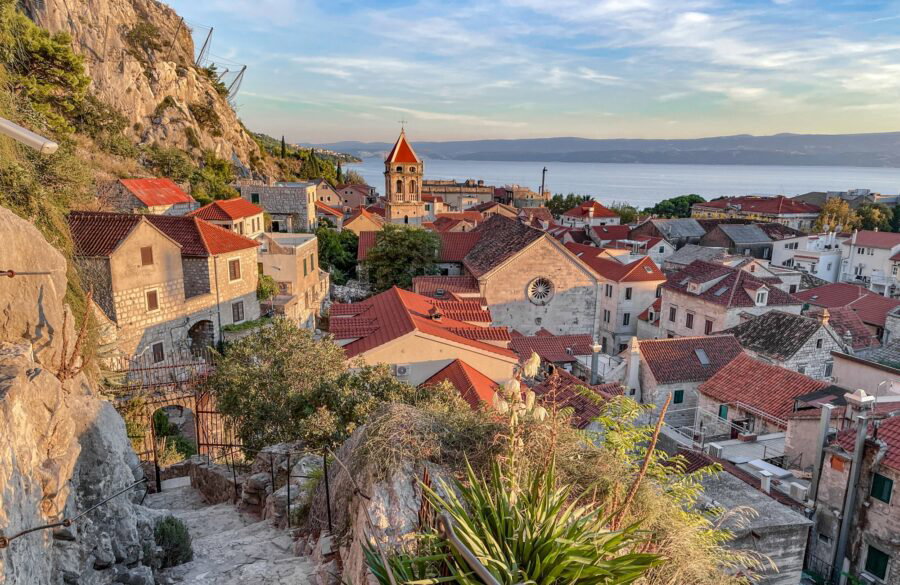
Now that you’re on day 3 of your Split itinerary, it’s time to explore outside of the city. One excellent option is to spend your day visiting the town of Omis.
With the backdrop of Cetina Canyon dominating the town, Omis is beautifully located at the point where the Cetina River flows into the Adriatic. Join one of the group tours in Split with a guide or hop on a bus; the journey only takes about an hour.
Enjoy some time wandering around Omis’ perfectly preserved town center, making sure to visit Starigrad Fortress. The 15th-century building offers fantastic views of the area, and there are a handful of restaurants where you can try out some local Croatian dishes for lunch.
If you want to see more of the surrounding natural landscape of the Cetina Canyon then you’re in luck. The area is laced with a number of hiking trails of different lengths that take you into the depths of the canyon, or you could join a kayaking tour and take in the scenery from the water.
More Time In Split
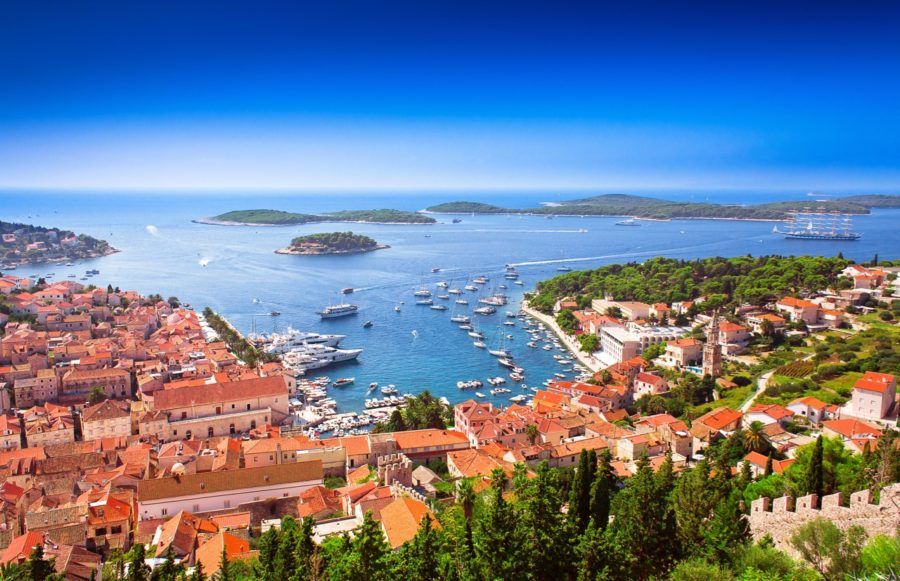
If you’re lucky enough to have more time to spend in Split, you have an array of options for things to do, delicious restaurants to try, and amazing day trips to embark on.
The ultimate Split itinerary should definitely include a day trip to the islands located just off the coast. Hop on one of the ferries from Split Harbor and make the hour-long journey over to Hvar Island. Indulge in a day of beach hopping, swimming, and strolling around the cute historical town.
Another fantastic tour from Split is Plitvice National Park. This UNESCO World Heritage Site spans almost 300 square kilometers and is crowned by emerald lakes joined by glistening waterfalls along a limestone canyon. It’s no wonder it’s the most popular attraction in the country!
By day 7, you would have had enough time to see most of the sights around Split and have a good understanding of the history and culture. If you have more time, why not enjoy a day or two relaxing on the beach?
Foodies might want to embark on a food tour and learn all about the best places to eat in Split from a local guide.
Brands We Use And Trust
Where To Stay In Split – Accommodation For Every Budget
Choosing where to stay in Split will depend on a few different factors. If you’re only visiting the city for a short time, then staying in the heart of the Old Town is a good idea. This means you won’t waste any time trying to get to top tourist attractions.
If you have more time to spend in the city and want to get an idea of what living in Split is like, the best places to stay are further away from the tourist crowds in the center of town.
Thankfully, there are plenty of places to stay in Split that suit different budgets and travel types, from high-end stays to self-catering accommodation.
Luxury – Hotel Park Split
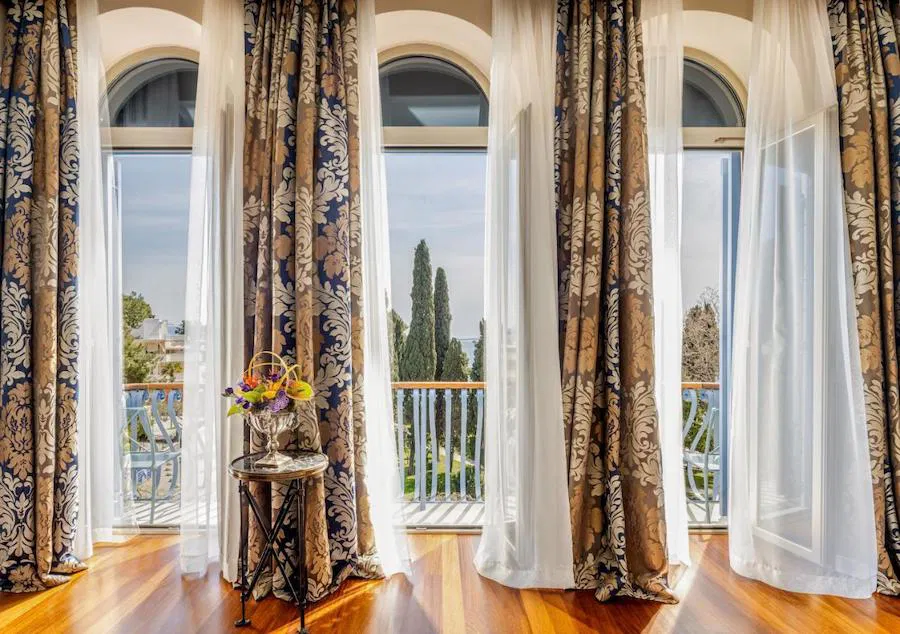
This five-star hotel, situated inside a 1921 building, is right in the heart of Bačvice Beach. Its guest rooms are polished and come with a collection of polished amenities.
Around the grounds of the chic hotel, guests can take advantage of an on-site restaurant, outdoor swimming pool, and manicured garden.
.Mid-Range – Hotel Paxx
Clean and comfortable, Hotel Paxx’s modern rooms offer great value for money. Located outside of the Old Town, it’s an ideal accommodation option if you’re looking to stay away from the peak season crowds in the center of Split.
There’s a beach and shops nearby, and the fitness center and restaurant are also available for guests to use.
.Budget – Slavija Culture Heritage Hotel

Tucked away inside a charming heritage building, this budget-friendly hotel is the perfect place to stay in Split. It is right in the middle of the Old Town, which means everything is easily reached on foot. Rooms at the property boast traditional stone walls and are clean and quiet.
.Tips For Planning A Trip To Split
Best Time To Visit Split
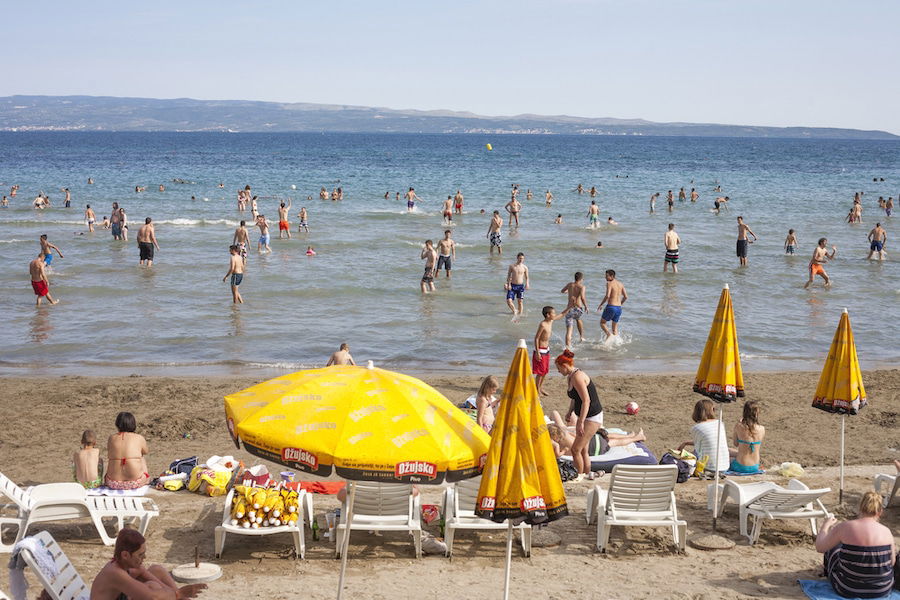
The best time to visit Split will vary depending on what you want to get out of your trip. The good news is that Split has something for everyone, and no matter what time of year you travel, there’s always something interesting to see.
Autumn
Planning a trip to Split in Autumn is a great idea. This is the time of year when the peak of the Croatian travel season has died down, but the weather can still be warm and pleasant. The thinner tourist crowds mean you won’t have to jostle for space in the Old Town, and accommodation prices will also be lower. Expect a daily average temperature drop of 62°F (17°C).
Spring
Spring is a wonderful time of year to visit Split. Temperatures have yet to hit the highs of summer, but as the season develops, you can make the most of pleasant average daily temperatures of around 63°F (17°C). Sea temperatures at this time of year remain cool, however, so beach days might not be at the top of your Split itinerary.
Summer
Summer is Split’s peak travel season, and you can expect large tourist crowds in the Old Town. The European summer holidays mean that people from across the continent will opt to take their vacation in the city: book flights, accommodation, and tickets for popular attractions well ahead of your visit.
The average daily temperature for July and August is around 82°F (27°C), but it can regularly hit highs of over 86°F (30°C).
Winter
Don’t overlook the winter season if you want to travel to Split but are on a budget. This is an excellent time of year for seeing sights with fewer crowds and experiencing a more local side of the city. Average daytime temperatures for Split in December hover around 49°F (9°C) but don’t expect the long sunny days of summer. One downside of traveling to Split in the winter is that many of the city’s restaurants and some hotels may be closed for the off-season.
Public Transportation In Split
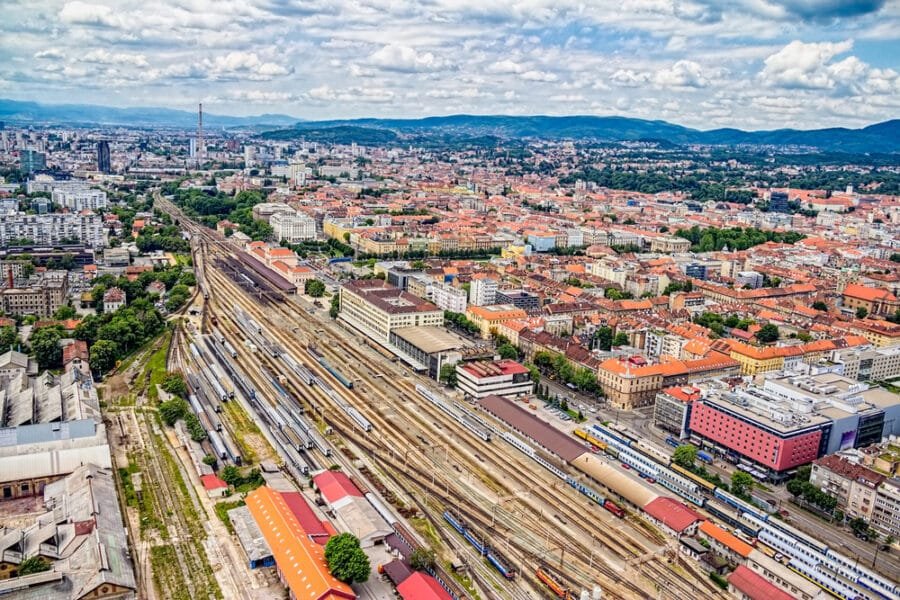
Public transport in Split includes buses, trains, taxis, and ferries. The type of transport you choose may depend on the length of your trip. If you’re only in the city for a few days, hopping in a taxi might be the best way to get around without wasting time.
The easiest way to get around Split is by walking. The Old Town is very walkable, and the distance between the sights isn’t very far. If you want to see more of the area around Split or travel further afield, you can use public transport.
Buses
Local buses in Split run along 19 routes around the city, along with three nighttime routes.
Buses are easy to use and cheap ways to travel around the city. Tickets can be bought from the driver or a ticket kiosk located around the city.
The buses are mostly modern, but some old buses travel around the city. Getting to destinations outside of the town can also be done by bus; for example, line number 37 connects to Trogir.
Buses are also an excellent way to reach Split from the airport. A regular public bus service departs from the main airport terminal and costs less than €1 for a 40-minute journey. Tickets can either be bought from the driver or online in advance.
Trains
Unless you want to travel by train to reach a specific destination, you probably won’t need to use the train while you’re in Split. The city has two train stations, but the central station is in the city center, right next to the bus station.
A handful of destinations that can be reached by train include Solin (with its incredible ruins of a Roman amphitheater) and the quiet charm of the Kastela region, which is around 30 minutes by train.
Ferries
If you want to see some of the pretty islands that stud the Adriatic, then taking the ferry is the best option. There are a collection of different ferry companies that ply the route between the various islands, covering 26 destinations in total. In high season, over 100 ferries depart daily from Split, but in low season, departures are cut to only around 30 a day.
You can take the ferry from Split to a long list of Croatian destinations, including Vis, Zadar, and Hvar. Ferry tickets vary depending on the company but are usually affordable. It’s a good idea to book in advance during peak season, as ferries fill up quickly.
Move This Adventure To Your Inbox & Get An Instant Freebie

No spam. Unsubscribe at any time.
Facts About Split – Planning A Trip
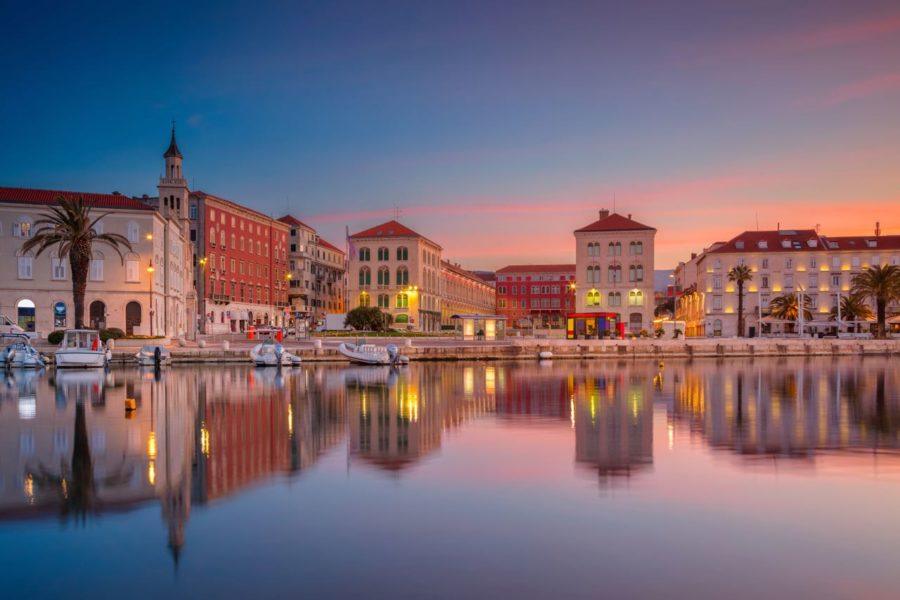
Population
Croatia has a population of almost 3.9 million. Around 90% of the population is of Croat ethnicity. The population of Split is 160,577 (as of 2021), making it the second-biggest city in Croatia after the capital Zagreb.
Language
Croatian is the language most widely spoken in Split. Many people are bilingual and speak English or Italian (mainly older generations) as a second language.
Currency
As of January 2023, when Croatia switched from using the kuna to the Euro, the Euro started being used in Split. 1 Euro is equal to around USD 1.09.
Plugs
Croatian plugs are types C (two round pins) and F (two round pins plus earth clips). The standard voltage is 230 V, and the standard frequency is 50 Hz. A universal adapter is advised.
Main International Airports In Split
Split’s main international airport is officially called Saint Jerome Airport (SPU). Flights from across Croatia, Europe, and the world regularly connect here.
Located 19 km (12 mi) from the city, Split Airport receives millions of travelers a year, making it the second busiest in the country.
How Long To Spend In Split
Split has an array of interesting sights, rich local culture, and plenty of chances to relax. Whether you’re visiting the Old Town of Split for one day or spending several days exploring the area, here are some ideas for itineraries to help you plan the ultimate trip to Split.
Conclusion
So, there you have it – whether you have just 24 hours in Split or have a few weeks to really get to know the city – you’re going to have a fantastic time. Split is one of the most beautiful cities in Croatia, and you can quickly fill your days enjoying the historic architecture, sampling local food, and exploring nearby destinations on day trips.
Enjoy your trip – it’s going to be one to remember!
- Best Boat Trips From Split
- Ferry From Split To Bol
- Split Or Zagreb – Which To Visit
- Taking The Split To Zagreb Train
- What To Do In Split When It Rains
- Where To Stay In Split
- How To Spend 2 Days In Split
- One Day In Split – 3 Itinerary Ideas
- Deluxe Cruise: 7 Night Dubrovnik To Split Luxury Itinerary
- How To Plan A Bachelorette/Hen Party In Split

